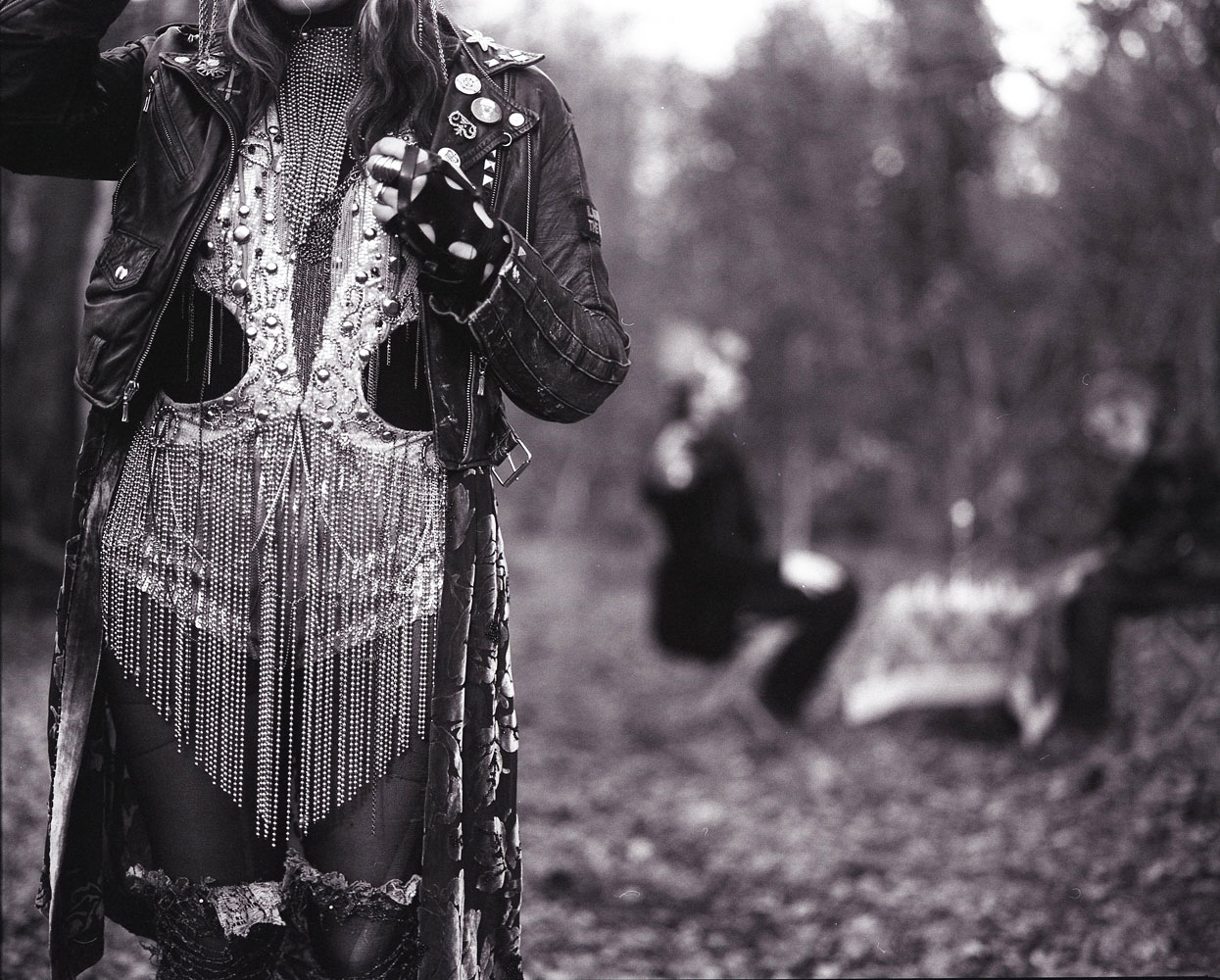What started out as a stylistic reaction to the lack of creativity associated with the genre of ‘band photography’ (a seemingly endless wasteland of uninteresting pictures of people in jeans and T-shirts, standing in front of walls, sitting on sofas or staggered on stairwells, looking gloomily into the camera, often lacking in style, substance and without the faintest hint of what the music actually sounds like), led Britt Seel (aka Foe), a South African born and London bred fashion stylist, creative director & singer, to start the search for the ultimate visual representation for her musical project Lunar Deception.
With the music being described as a ‘sonic out of body experience’ Britt wanted to try and find a way of portraying this aural sensory perception in visual photographic form.

As a long-time lover of film, and after extensive research of the lithography process, Britt felt as though this would be the only medium capable of attaining a true representation. Just as a lithograph is a one-off piece of art (which can never be replicated) with an image burnt into paper, it drew a parallel of a similar process: when music is etched into wax during the cutting of a vinyl record.
A set of lithographs was the only art form that would do justice in securing a visual representation of Lunar Deception’s music. Britt set out to find the perfect artist to collaborate with. The research led to London-based, British photographer and visual artist Selina Mayer. Selina not only had a good eye (as seen in her previous works) but also was one of the few photographers who still specialises in using traditional analogue techniques. After an initial afternoon liaison consisting of becoming uncontrollably lost in a mutual love & respect for art, film and Francesca Woodman, the union was struck.


Selina’s work ethic and her artistic manifesto drew a parallel on how Lunar Deception compose their music- layering sounds on top of each other, carefully choosing each element that will add to the overall piece. It’s a slow process where everything is deliberate but, at the same time, has the space and freedom to evolve and allow for the ‘supernatural’ to manifest itself.
Selina shoots on film, which she processes and develops herself at home. Her use of natural light directly references traditional painting (and the concepts of beauty associated with it) rather than the often enclosed limitations of a constructed studio set up. Selina doesn’t do any post-production on her photographs beyond the simplest of tonal adjustments. Any dust left on her prints or negatives is left as she found it. She continues to shoot the vast majority of her images on the same types of film, cameras and lenses that she has used for years.
These restrictions, however, do present a challenge. They slow up the process; every frame must be carefully thought-out, studying the light, considering the composition and scrutinising the subjects before opening the shutter. Whilst Selina will restrict herself with regards to tools and materials, she will also give herself the space to make mistakes, to improvise and to collaborate with her subjects. She always wants the subjects of her photographs to be active participants, not passive objects. Using the mechanisms of the camera to focus on them (and the painterly light and shadow to emphasise & explore them), she invites her viewers to explore these elements with her.


As she draws attention to the surfaces of her subjects, she also draws attention to the surface of the photographs, through the presence of flaws and defects, specks of dust, film grain, the occasional light leak or chemical quirk.
In a world increasingly filled with incorporeal imagery everywhere we turn, Selina wants her photographs to be seen as objects as well as images, with a physical and tangible presence. This is also why she uses analogue photographic processes in an increasingly digital age. The tactile nature of such processes brings her much more satisfaction than sitting in front of a computer screen ever could. She much prefers to end up with a physical object in her hands (created with light and chemicals) that echoes the physical presence of the subject within the frame.




For our shoot, we settled on two London locations: Abney park and Highgate Forest. Britt styled the shoot with costumes from Prangsta, based in New Cross. All these costumes are handmade and one–off pieces. This significantly helped shape the unique elements of what we were trying to achieve with the final image. Once the pictures were taken, we spent the following weekends at Selina’s studio, where we experimented with different chemical combinations, lighting techniques & paper textures.
The photographs we liked the most had a burnt effect (as you can see above!). This was a result of having a desk lamp too close to the images during the development process. The burn ripped through the pictures like a forest fire and in turn, created that same ‘inflamed’ effect on the image. We documented the whole process with a short behind-the-scenes video which you can see below:
Thanks for reading!
~ Britt Seel
Share your knowledge, story or project
The transfer of knowledge across the film photography community is the heart of EMULSIVE. You can add your support by contributing your thoughts, work, experiences and ideas to inspire the hundreds of thousands of people who read these pages each month. Check out the submission guide here.
If you like what you’re reading you can also help this passion project by heading over to the EMULSIVE Patreon page and contributing as little as a dollar a month. There’s also print and apparel over at Society 6, currently showcasing over two dozen t-shirt designs and over a dozen unique photographs available for purchase.







